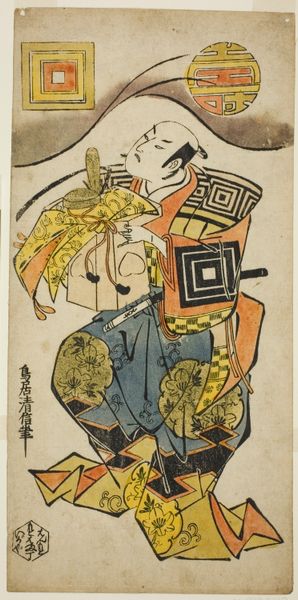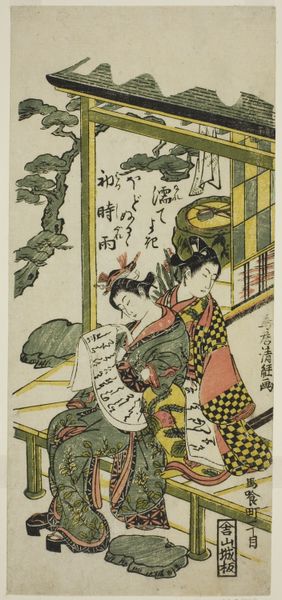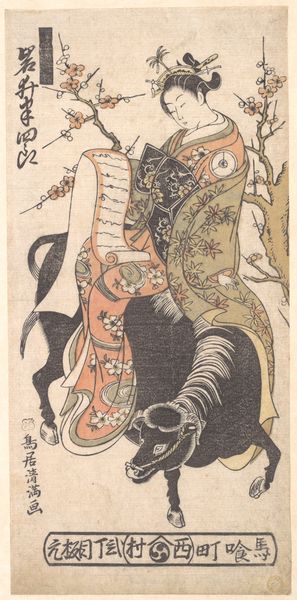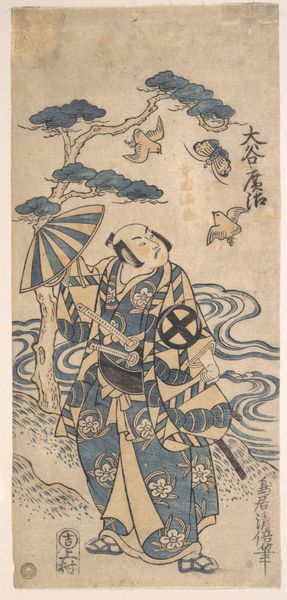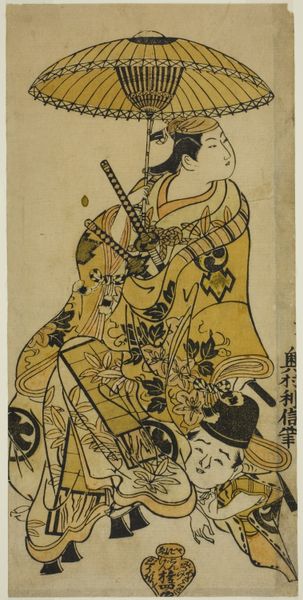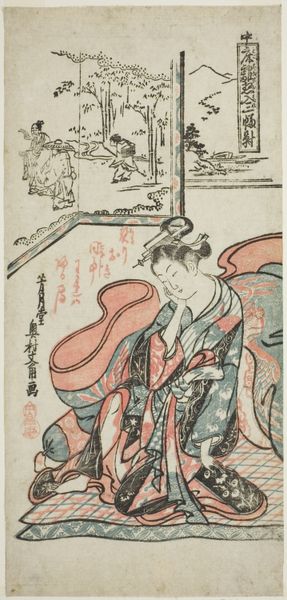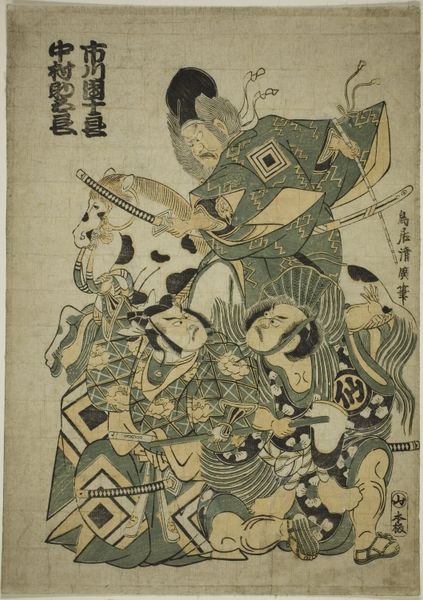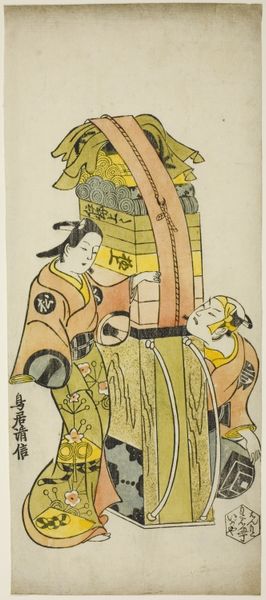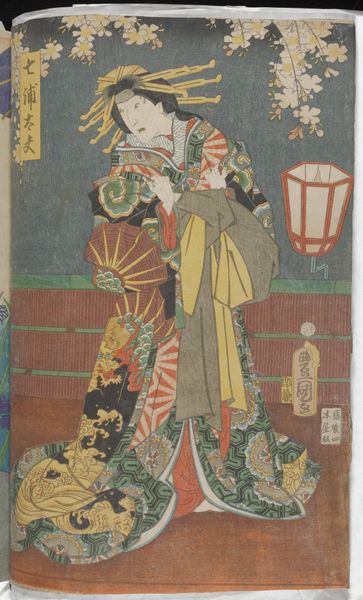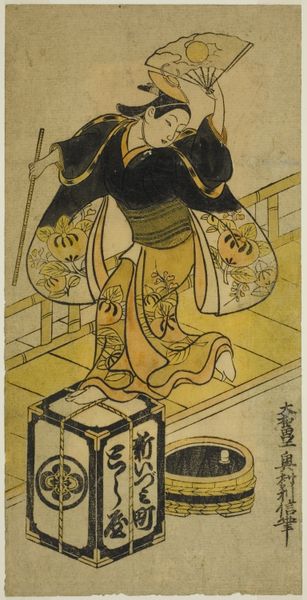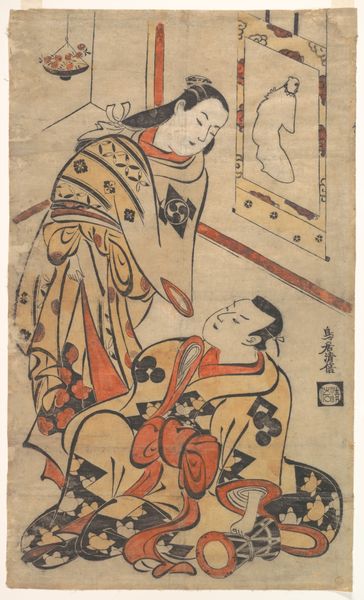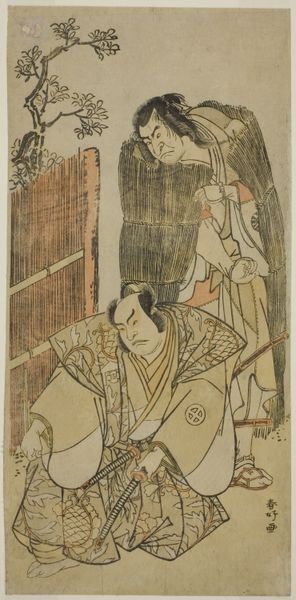
print, woodblock-print
#
portrait
# print
#
asian-art
#
ukiyo-e
#
figuration
#
woodblock-print
#
genre-painting
Dimensions: 28.0 × 15.6 cm (12 3/8 × 6 1/8 in.)
Copyright: Public Domain
Curator: Okumura Toshinobu's woodblock print, titled "Osome and Hisamatsu," dating from around 1720, presents an intriguing narrative snapshot. Editor: It has a wistful feel, doesn’t it? A kind of gentle sadness permeates the scene. The delicate lines and muted palette contribute to this mood. Curator: Yes, and considering that this is a ukiyo-e print, part of what makes it so poignant is that it offers insight into popular culture and consumerism of the Edo period. The production of these prints was tied to merchant patronage, the materials affordable, and widely distributed to an urban audience. The subjects come from that environment, too: genre scenes or, like here, depictions of specific actors. Editor: Note the imagery, the characters, so deliberately placed. Osome standing, perhaps in a protective or comforting posture, and Hisamatsu seated, looking despondent. There is the careful attention to costume, suggesting status and identity within their world, but look too, at the details. For example, what are the small tablets above them on the shelf representing? Curator: Those tablets could have symbolic significance, referring to personal narratives—success or blessings maybe? But to your earlier point about mood and narrative, it would be difficult to fully grasp the story behind this scene without recognizing the importance of the economic forces that contributed to making affordable artwork like this, a reality. Mass production allowed for narrative and sentiment to reach the masses. Editor: Right, the means by which people access and consume images profoundly affects how meaning is made and interpreted. Even the format and the way this was originally distributed – a relatively inexpensive woodblock print versus, say, an elaborate painted scroll destined for elite patronage – that dictates its reach and longevity. What symbols resonate, who sees them, how they’re received: these all shift over time. And I'm still struck by the somber atmosphere – despite its genre-scene context. Curator: A somberness heightened perhaps because now we see these individuals at such a distance from their context. Editor: Ultimately, "Osome and Hisamatsu" reminds us that an artwork is more than just pigment and wood, that the image and the materiality intertwine to reveal the culture in which they’re situated.
Comments
No comments
Be the first to comment and join the conversation on the ultimate creative platform.
